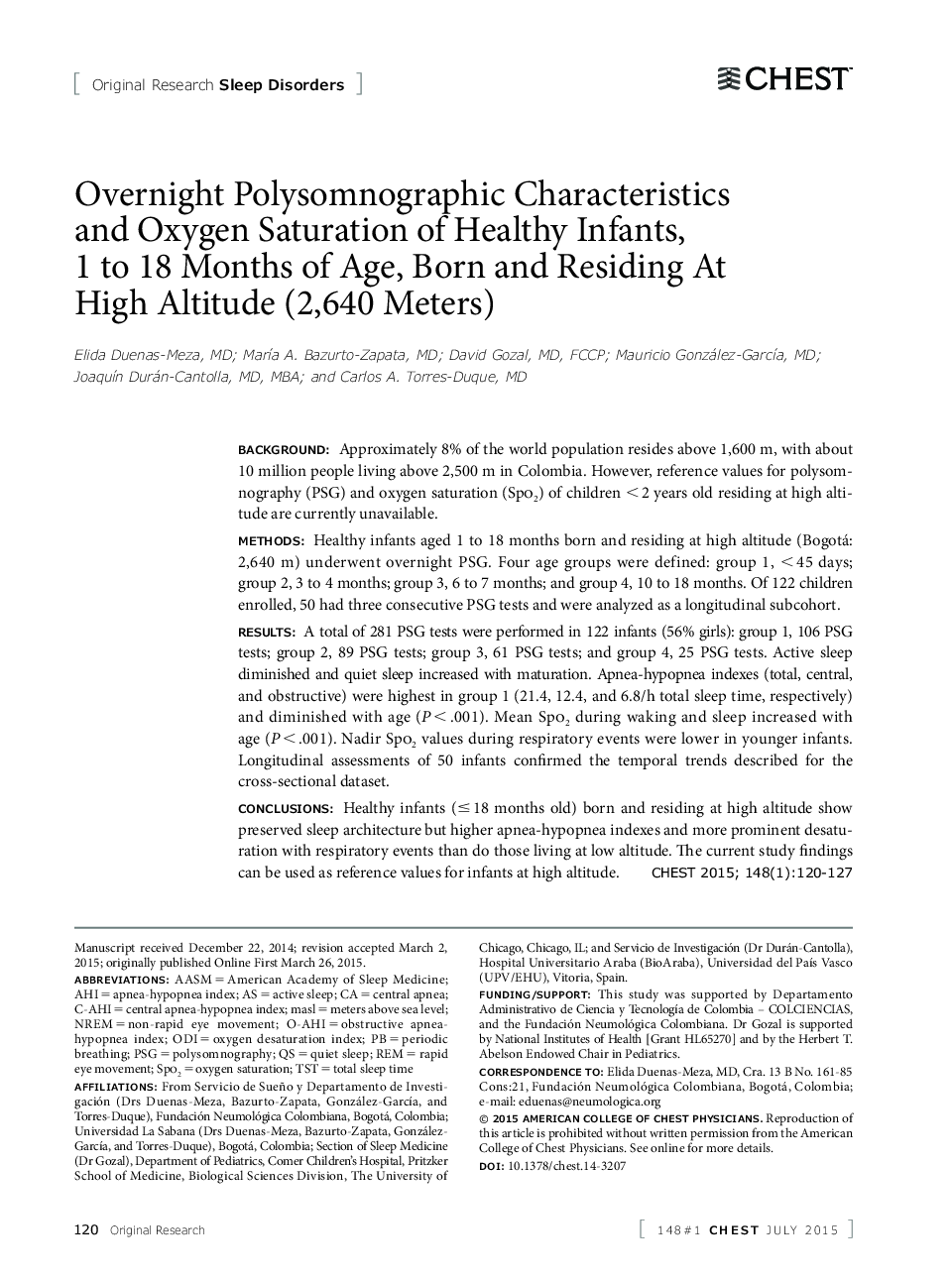| Article ID | Journal | Published Year | Pages | File Type |
|---|---|---|---|---|
| 5952705 | Chest | 2015 | 8 Pages |
BACKGROUNDApproximately 8% of the world population resides above 1,600 m, with about 10 million people living above 2,500 m in Colombia. However, reference values for polysomnography (PSG) and oxygen saturation (Spo2) of children < 2 years old residing at high altitude are currently unavailable.METHODSHealthy infants aged 1 to 18 months born and residing at high altitude (Bogotá: 2,640 m) underwent overnight PSG. Four age groups were defined: group 1, < 45 days; group 2, 3 to 4 months; group 3, 6 to 7 months; and group 4, 10 to 18 months. Of 122 children enrolled, 50 had three consecutive PSG tests and were analyzed as a longitudinal subcohort.RESULTSA total of 281 PSG tests were performed in 122 infants (56% girls): group 1, 106 PSG tests; group 2, 89 PSG tests; group 3, 61 PSG tests; and group 4, 25 PSG tests. Active sleep diminished and quiet sleep increased with maturation. Apnea-hypopnea indexes (total, central, and obstructive) were highest in group 1 (21.4, 12.4, and 6.8/h total sleep time, respectively) and diminished with age (P < .001). Mean Spo2 during waking and sleep increased with age (P < .001). Nadir Spo2 values during respiratory events were lower in younger infants. Longitudinal assessments of 50 infants confirmed the temporal trends described for the cross-sectional dataset.CONCLUSIONSHealthy infants (⤠18 months old) born and residing at high altitude show preserved sleep architecture but higher apnea-hypopnea indexes and more prominent desaturation with respiratory events than do those living at low altitude. The current study findings can be used as reference values for infants at high altitude.
